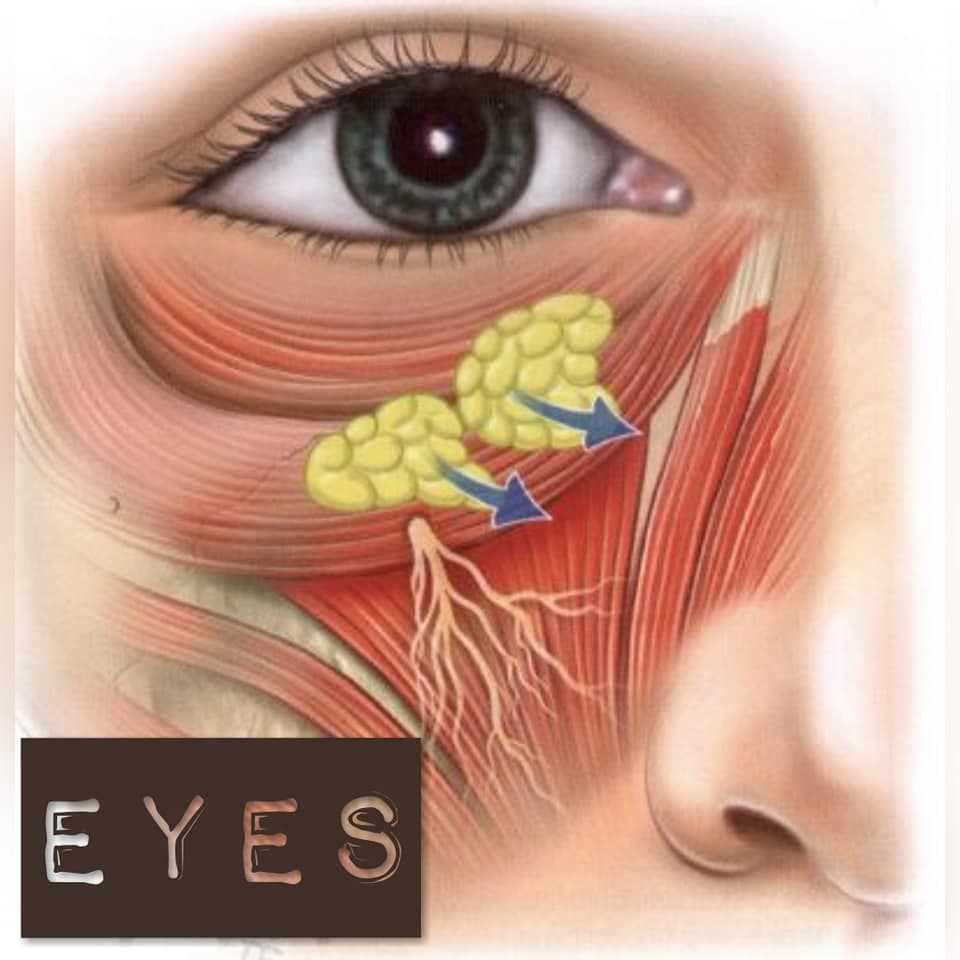With age, the circular muscle of the eye changes and the eyes seem to fall inward. Appearing superfluous, the skin of the upper eyelids begins to hang and forms folds. In the case when the skin of the lower eyelid is tightly pressed to the muscle, wrinkles appear. With frequent swelling or the presence of excess fluid between the muscles and #skin of the eyelids due to poor #lymphatic drainage — the skin begins to hang in the form of bags. As a rule, when a circular muscle is deformed, the eye slit also decreases quite noticeably. The stratification of the fibers of the circular muscles of the eye often leads to the extrusion of the mucous sacs of the hernia through the stratified fibers of the muscles under the skin. With age, the situation worsens due to poor lymphatic drainage or edema, and the hernia begins to grow. It is possible to fight incipient #hernias, but it is almost impossible to get rid of those formed without surgical intervention.
The muscular system of the face is a single biomechanical design that always responds to any changes in its structure. The deformation of one muscle pulls the other. The eyes do not sink because of the deformation of the circular muscles of the eye — this is a forced reaction to changes in #peripheral structures, bone and muscle, which clamp it from all sides. The orbit consists of several bones and deforms with age. Therefore, the problems of the circular muscles of the eye depend on the bones of the skull.
The orbit of the eye is surrounded by different muscles and bone structures. From above presses the frontal bone and the frontal muscle, which, dropping down, force eyebrows to drop. If the eyebrows are lowered, the eyelids are lowered. From the side of the eye presses the temporal muscle and temporal bone. The sphenoid bone plays an important role in the collapse of the eyes. Large wings of this bone come to the surface of the skull near the outer corner of the eye. From the lower outer corner of the eye crawling spasmodic chewing muscle, which by its shortening affects the formation of oblique wrinkles. Visual retraction of the eyes is enhanced.
The zygomatic bone, to which the surface part of the masticatory muscle is attached, has a great influence. The pterygoid muscles are attached to the temporal bone and are involved in the formation of the temporomandibular joint that connects the mandible to the base of the skull. From the inner corner of the eye, the lateral part of the nose tightens and creates a bulge. The muscles that lower the wing of the nose are also involved in the formation of a failed eye and the visual lengthening of the nose. In addition, this muscle affects the formation of the upper nasolabial rim and folds at the wings of the nose. She does this together with the muscle that lifts the upper lip and the wing of the nose. In such a friendly tandem a nasolacrimonial sulcus is formed, which increases the dips under the eyes. It is worth noting that the wing of the nose behaves so under the influence of the upper jaw spasm.
Summing up, it is necessary to say that the bone structures are not as tough as many people think. Inside them, as in the cavity of any bone, there are their own processes — intraosseous restrictions. The bone can contract like a muscle. Therefore, in the overwhelming majority of cases, the cause of the deterioration of the aesthetics of the eyes is completely eyelid skin.


